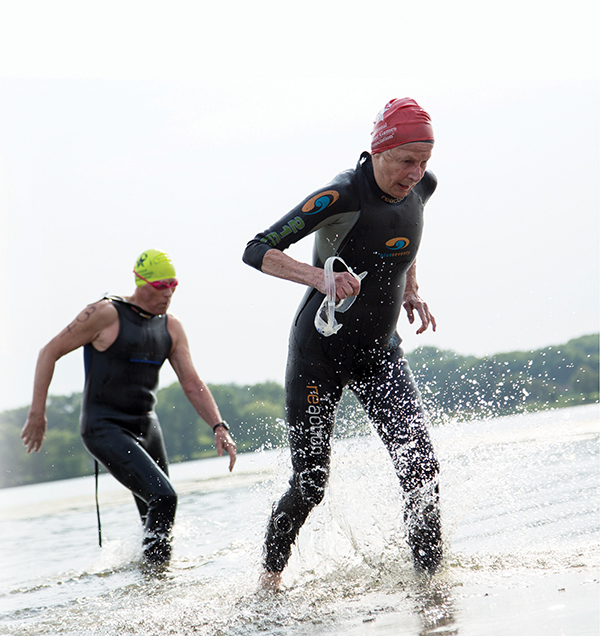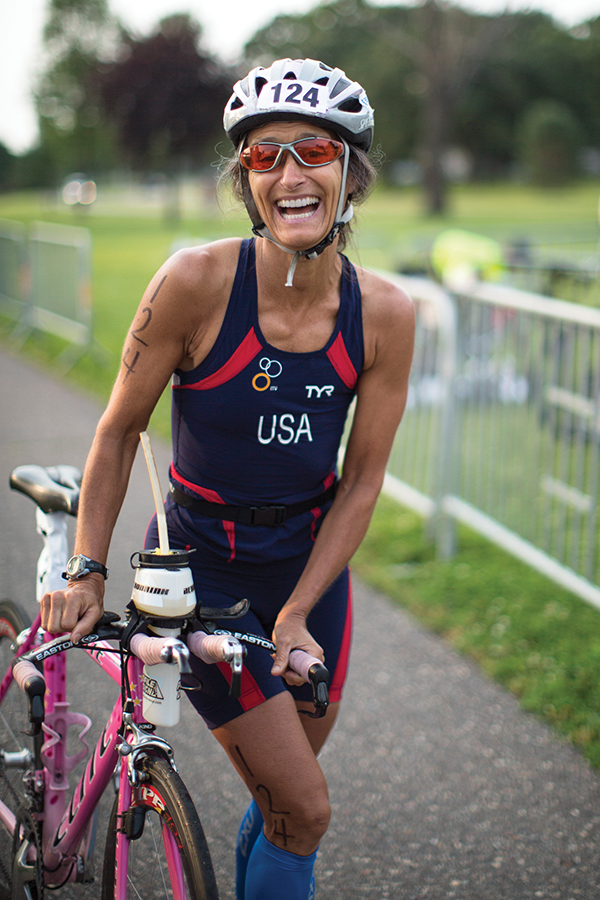

The World Health Organization indicates that the proportion of the population over age 60 around the globe will have doubled from 12 percent in 2015 to over 22 percent by 2050. That age distinction currently is represented primarily by the Baby Boomer generation comprised of individuals born between 1946 and 1964.
The aging population is incentive to focus on developing and marketing programs and products desired by Baby Boomers, and in general, all seniors, generally defined as individuals age 50 and over. Among those seniors are lifelong physical fitness advocates and athletes who continue to be motivated by the thrill of competition or simply the effects of engaging in an active lifestyle.
The steady increase in individuals age 50 (or 60) and over has been realized in the rising number and percentage of seniors engaging in fitness and sport activities. For example, according to the International Health, Racquet and Sportsclub Association (IHRSA), senior membership in health clubs has increased 34 percent in the past 10 years.
According to the National Senior Games Association, participation numbers in the biennial event for athletes age 50 and over have also increased over the years with an average of 12,166 competitors participating in the last three National Senior Games (2017-2022) compared to an average of 10,030 in the three previous Games (2011-2015). Similar participation increases can be found in other competitive events available for seniors. The increase in participation numbers supports the fact that senior athletes are a trending marketplace to offer fitness products and programs for a population aged 50 and over.
Products that appeal to Baby Boomers who define themselves as athletes are likely those that contribute to their functional maintenance, allowing them to engage in an active lifestyle. It is not a secret that an individual’s physical capabilities and functions diminish as one ages. Studies indicate that individuals aged 50 years to 75 years experienced an approximate 2 percent decline in physical performance per year which increased to approximately 8 percent annually once over the age of 75.
In light of the incremental performance decline and loss of muscle strength, senior athletes are likely incentivized to purchase products that assist them in regaining some semblance of physical power, mobility, flexibility, etc. Stability balls, resistance bands, recumbent bikes and core sliders are examples of home fitness equipment appealing to Baby Boomers. Nutrition is also a huge factor for health which makes seniors a prime market for protein powders, energy supplements and vitamins. Finally, any type of easy-to-use technology to track exercise is a hot commodity for seniors. In fact, a 2020 study of over 5,000 individuals using a fitness tracking app found that exercise habits of those age 65 and older increased during the pandemic while engagement by middle-aged and young adults decreased.
In aggregate, the Baby Boomer generation has a relatively high degree of disposable income which increases the likelihood that senior athletes will be willing and able to purchase products and services that assist them in achieving their healthy, active lifestyle goals.
The marketplace for senior athletes, however, extends far beyond nutritional supplements, home fitness equipment, gym memberships, tracking apps and personal trainers. These healthy-minded older adults are a prime target market for competitive events that recognize the unique needs of seniors and cater to a class of individuals who are over the age of 50.

Decisions regarding which tournaments or events to register for or attend are partially based on the anticipated overall experience. Event organizers should consider the needs and desires of senior participants and their entourage who may travel with them on location. From genre of music to nutrition samples to social engagement and health screening opportunities, ancillary services and amenities for seniors can be arranged before, after and during an event. Targeting sponsors of products for aging adults is an avenue that can create the ideal environment that appeals to seniors.
One way to cater to seniors is to define age-group categories by smaller increments instead of lump-summing a class into 50-older.Typically, masters and seniors are placed into five-year increments (50-54, 55-59, 60-64, etc.) Additionally, creating multiple skills categories within the age categories allows for seniors to appropriately place themselves within a competition. Senior softball, for example, claims to be the “safest” division of softball in America because of its five-year age increments (through 85+), gender distinctions and four separate skill levels including AA, AAA, Major and Major-Plus.
As the number of individuals classified as seniors increases, so it seems, the opportunities to engage in sport have also increased. As indicated, the National Senior Games organized by the national Senior Games Association, is a biennial competition for ages 50 and up. Labeled as the largest multi-sport event in the world for seniors, the Games include 21 sports under the categories of individual, team and non-ambulatory.
To qualify for the national competition, athletes must compete at a NSGA-sanctioned State Qualifying Games and typically either finish in the top four of an event or exceed the minimum performance standard for their age category which is set by the sport. There are 51 state qualifying games for seniors (including Washington, DC). Additionally, seniors may participate in the Canada Games or the Veterans Games to qualify for the United States (U.S.) national event.
Communities are taking advantage of the trending marketplace for senior athletes by organizing their own versions of Senior Games. The city of Fort Myers in Florida, for example, coordinates the Lee County Senior Games with age categories classified in five-year increments starting at 50 and extending to age 100 and above. Among the events which include a $15 entry fee are pickleball, table tennis, tennis, archery and billiards. Similarly, the city of Cincinnati hosts the Southwest Ohio Senior Games with identical age categories, but more event options.
Masters Games is yet another avenue for seniors to compete in athletic events. The International Masters Games Association (IMAG) comprised of international sport federations such as World Athletics and the International Tennis Association serves as the rights holder to the World Masters Games and international events held quadrennially in the style of the Olympics.
Confederations within the Olympic movement host versions of Master Games including the Europe, Asia Pacific and the Pan-American region which are all staging events in either 2023 or 2024. The next World Masters Games is scheduled for Taiwan in 2025. According to the IMAG, the lowest age for Masters events is 25 with increments of 5 or 10 years, depending upon the sport. The IMAG also lists 59 sports which may be available based on the host city. Among these sports are softball, tennis and weightlifting.
A number of competitions for elite competitors follow the guidelines of their respective sport federation in terms of age categories that extend opportunities for participation by older adults. Triathlon, swimming, various martial arts (e.g., judo) and track and field events, for example, use five-year increments with the last being typically 65 or 70 and older. Tennis and golf, on the other hand, organize completely separate competitions for seniors through senior tournaments and tours.
The key takeaway for organizations that are in the business of staging athletic events is to consider the trending marketplace of senior athletes who likely have the disposable income to spend on sport tourism or simply event fees in their local area. Whether staging a community road race, a statewide tournament or a multi-sport festival, including age categories and marketing opportunities to seniors can potentially attract participation from aging adults as well as the companies and businesses with products and services catering to the senior population. SDM

